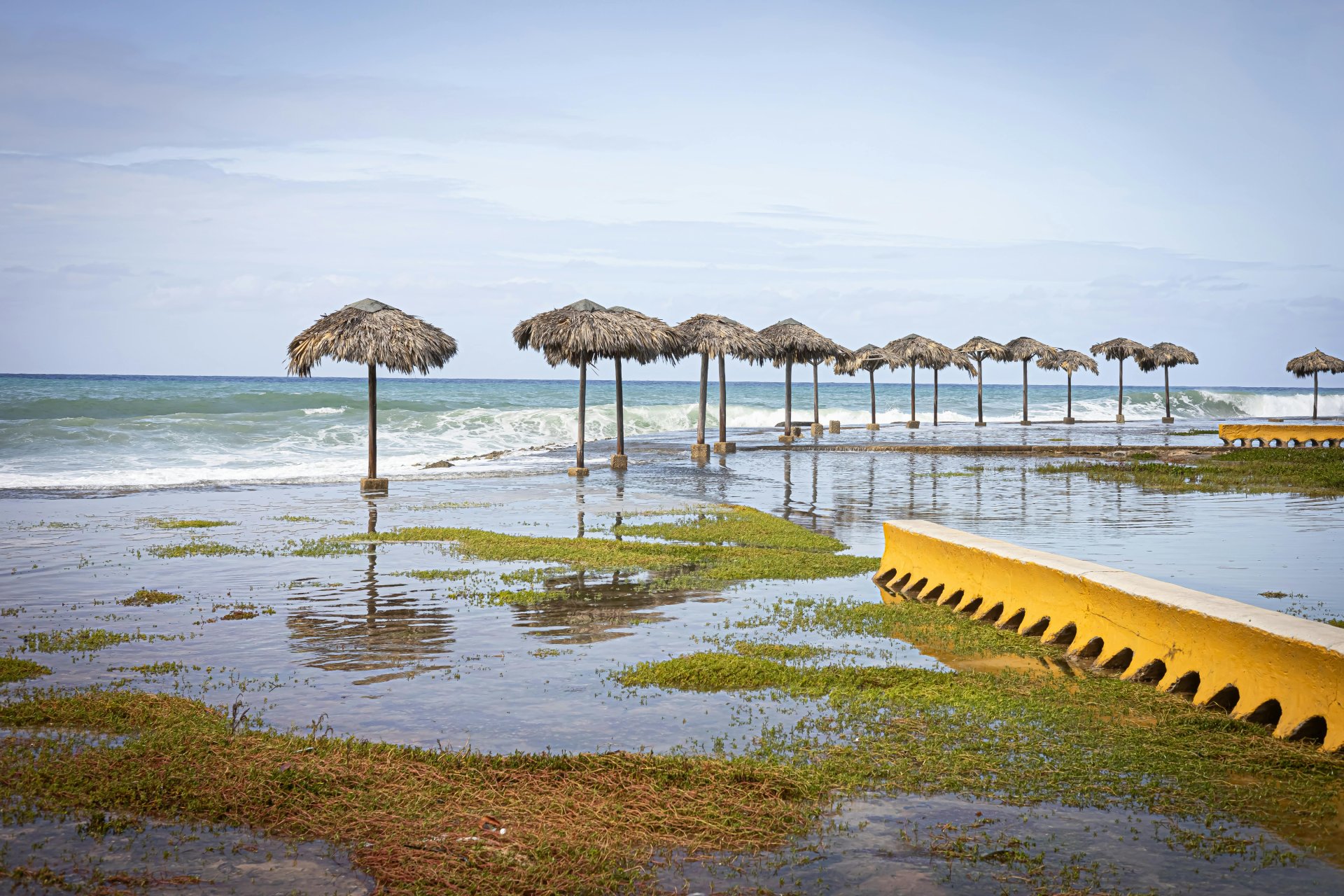Article Highlights:
- Sampling bizarre foods worldwide offers a thrilling culinary adventure but carries health risks like food poisoning and traveler’s diarrhea.
- Commonly consumed unusual foods include balut, surströmming, casu marzu, sannakji and fried spiders, each with unique flavors and risks.
- Traveler’s diarrhea affects up to 70% of travelers and is often caused by exposure to unfamiliar bacteria, viruses or parasites in food and water.
- Preventative measures include avoiding high-risk foods, carrying doctor-approved medications and seeking medical help when necessary.
- Global Rescue provides 24/7 medical assistance, ensuring travelers get proper treatment, medications and consultations abroad.
Food lovers around the world seek out new and exotic delicacies as a way to immerse themselves in different cultures. While some local specialties delight the palate, others challenge even the most adventurous eaters. From fermented shark to larvae-filled cheese, these dishes offer unique experiences, but sometimes at the cost of gastrointestinal distress. Knowing what to expect and how to recover from a bad food experience is essential for travelers.
Exploring Bizarre Foods From Asia
Pack your appetite and sense of adventure: we’re about to journey through Asia’s wildest culinary curiosities. For fearless foodies who love venturing off the eaten path, this lighthearted tour promises the thrill of tasting the unthinkable. No boring meals here. Instead, picture yourself slurping and crunching on snacks that might raise an eyebrow (or a goosebump) but will definitely give you a great story to tell.
On our culinary tour of odd delicacies, you’ll crack open a balut – the Philippines’ infamous fertilized duck egg savored straight from the shell, a street food so common that locals enjoy it as casually as pizza. Next, you’ll gnaw on saucy chicken feet (yes, chicken feet!) – a chewy, flavorful treat beloved from Chinese dim sum parlors to roadside stalls across Southeast Asia and even in Latin America. And for the regional grand finale, how about crunching on some fried spiders in Cambodia? These crispy eight-legged snacks (deep-fried tarantulas, to be exact) are a local delicacy, gladly munched on by bold locals and adventurous tourists alike.
Balut (Philippines) is a fertilized duck egg with a partially developed embryo and is a street food favorite in the Philippines. It’s often served with salt and vinegar, offering a mix of soft yolk, broth, and crunchy bits of duck. While it’s rich in protein, some travelers struggle with its texture and intense flavor. Gastrointestinal discomfort can occur, especially if the egg is not fresh.
Chicken Feet (China, Southeast Asia, Latin America) are often braised or deep-fried. They are a textural experience rather than a meaty dish. While safe when well-prepared, improperly cleaned feet may expose travelers to bacteria that cause food poisoning.
Spiders and Fried Spiders (Cambodia) are deep-fried tarantulas found in Cambodia. They’re a crispy delicacy packed with protein. While generally safe when properly cooked, some travelers experience stomach upset due to unclean preparation conditions or difficulty digesting the spider’s exoskeleton.
Europe’s Strange Foods
If your taste buds are feeling bold, Europe offers a range of time-honored delicacies that will test the limits of your culinary courage. Some of these dishes stem from a time when nothing went to waste, while others have been passed down as cultural treasures that remain as strong as ever. Whether it’s the pungent punch of fermented fish, the earthy depths of blood sausage, or the controversial crunch of insect-laden cheese, these bizarre European foods will either thrill your palate or challenge your stomach.
Hákarl (Iceland) is a fermented Greenland shark, considered a rite of passage for daring diners. It is cured for months to remove toxins, carries a strong ammonia aroma, and is notorious for its ammonia-rich smell, pungent taste and intimidating reputation. Though safe to eat, its fermentation process can be harsh on sensitive stomachs, leading to nausea or digestive issues in some visitors.
Haggis (Scotland) is the country’s national dish. It’s a mix of sheep’s heart, liver and lungs encased in a stomach lining. It’s loved by Scots but sometimes intimidating to first-timers. While it’s flavorful and nutrient-dense, the high-fat content can trigger digestive discomfort, especially for those unaccustomed to rich meats.
Surströmming (Sweden) is fermented herring and is infamous for its intense, putrid odor. It has been dubbed one of the world’s smelliest foods. If you can get past the overpowering odor, locals swear by its unique, briny flavor when paired with crispbread and onions. Traditionally eaten with flatbread and onions, its powerful fermentation can cause bloating or nausea in travelers unaccustomed to strong-smelling foods.
Casu Marzu (Italy) may be one of the most shocking delicacies of all. It’s a cheese filled with live insect larvae that assist in the fermentation process. While illegal in many countries, this Sardinian specialty remains a controversial and sought-after dish among extreme food lovers. The risk of intestinal infection makes it a controversial choice for daring food explorers.
Black Pudding (UK, Ireland) is a sausage made from pig blood and grains. Black Pudding lovers from the UK and Ireland boast that it is perhaps one of the more accessible bizarre international foods. Black pudding is packed with iron and has a distinct earthy flavor. It can be off-putting for new eaters, and the high-fat content might also lead to mild indigestion.
Escargots (France) are snails often prepared with butter and garlic. The dish is a classic French delicacy. Despite their unusual nature, Escargots are widely celebrated for their tender texture and rich taste. While safe, consuming snails from unreliable sources could risk parasitic infections.
Unusual Foods From Asia
Traveling the world is an adventure for all the senses, but few experiences are as daring, or delightfully bizarre, as diving into Asia’s most unusual delicacies. For the culinary thrill-seeker, the continent offers a menu that challenges taste buds and bravery, featuring dishes that wiggle, stare back or come with a surprise splash of unexpected texture.
Imagine sitting down at a cozy Japanese izakaya and being served a delicacy known as milt, a creamy, nutrient-packed dish that is fish sperm. Not for you? Perhaps Japan’s tuna eyeballs are more your style. It’s a rich, fatty morsel that may not blink but will undoubtedly leave an impression. No? How about steaming cups of beondegi – silkworm pupae – from South Korea? Looking for more? There’s sannakji, Korea’s infamous live octopus, whose tentacles may still be wriggling even as you lift them with your chopsticks, adding a thrilling challenge to an already chewy bite.
These bold bites aren’t just about shock value. They represent deep culinary traditions, a love for texture and flavor, and a test of how adventurous you’re willing to be.
Milt (Japan, Russia, Europe) is fish sperm served raw or cooked in Japan and a few other countries, such as Russia, the Czech Republic, Sicily and parts of Poland. While rich in nutrients, some people find its creamy texture off-putting, and raw seafood always carries a risk of parasites.
Tuna Eyeballs (Japan) are a fatty delicacy, often boiled and seasoned. While generally safe, the high-fat content can cause stomach discomfort in those unaccustomed to eating rich seafood parts.
Beondegi (South Korea) is silkworm pupae, a common street snack in Korea, steamed or boiled. Some travelers enjoy its nutty flavor, while others find the texture difficult. Those sensitive to shellfish may experience mild allergic reactions.
Sannakji (South Korea) is a live octopus served with its tentacles still moving. The most significant risk isn’t illness but choking; tentacles can stick to the throat if not chewed properly.
Weird Foods From North America
North America may be famous for burgers and barbecue, but for the true culinary adventurer, there’s a wilder side to the menu, one filled with unexpected textures, deep-fried surprises and a touch of insect intrigue. If you thought the continent’s most daring dishes involved extra-spicy hot wings, think again. Here, delicacies range from crispy, golden-brown bull testicles to buttery ant larvae, each offering a bold new experience for the fearless foodie.
Rocky Mountain Oysters (USA, Canada) are not bivalve mollusks but deep-fried bull testicles. The dish is often enjoyed at festivals but can be difficult to digest for those unfamiliar with organ meats, leading to bloating or mild stomach upset.
Escamol (Mexico) is Mexico’s so-called “insect caviar” – a buttery, nutty dish made of ant larvae that has been enjoyed for centuries but still gives some travelers pause. These ant larvae are considered a delicacy in Mexico and are usually sautéed with butter and garlic, but like many insect-based foods, they could cause allergic reactions in some travelers.
Huitlacoche (Mexico) is a fungus that grows on corn, creating a soft, truffle-like texture. It’s a sought-after delicacy in Mexican cuisine, though those unfamiliar with its earthy, mushroom-like flavor might struggle to enjoy it.
Strange Foods: Preventing a Gastrointestinal Revolution
If you’re traveling and willing to try some or all of the celebrated (or infamous) unusual international dishes, consider a couple of precautionary measures before eating. Traveler’s diarrhea (TD) affects 30-70% of travelers, according to the CDC. Many cases arise from consuming contaminated food or water, especially in high-risk areas. TD is often caused by bacteria like E. coli or parasites, leading to symptoms such as nausea, vomiting and stomach cramps.
Stick to reputable restaurants, avoid street food in unsanitary conditions and drink bottled or filtered water. Over-the-counter medications like Pepto-Bismol or Imodium can relieve you if you get sick, but severe cases may require antibiotics. Hydration is key, as is seeking medical attention if symptoms persist.
The Global Rescue Connection
Global Rescue’s 24/7/365 medical advisory service can help travelers find Pepto-Bismol, Imodium, or a local alternative, or find a doctor who speaks their language and a local pharmacy to fill a prescription for them.
Is your severely upset stomach due to food poisoning? As a member, we want you to contact us whether it’s a major emergency or something minor. You will get real-time access to doctors, paramedics and nurses who will help sort out the do’s and don’ts based on your unique situation and symptoms. It’s part of your membership services.
Before every trip, Global Rescue recommends getting a pre-travel consultation with a health professional to equip and prepare yourself with the necessary preventive measures and medications.









